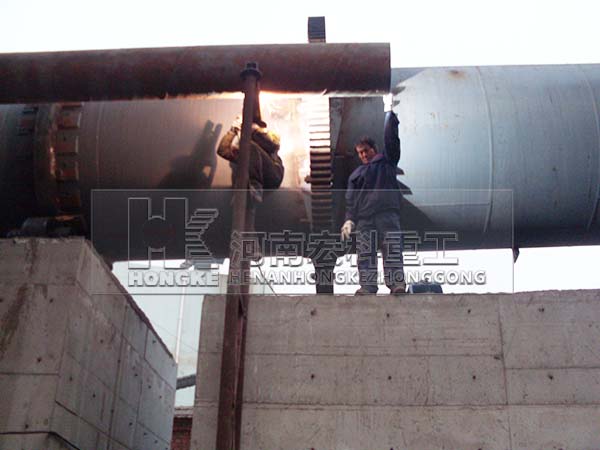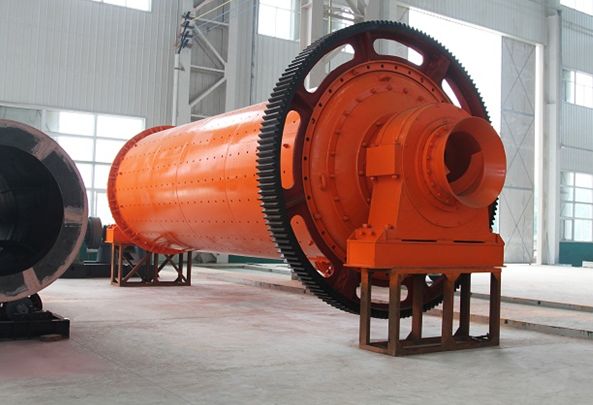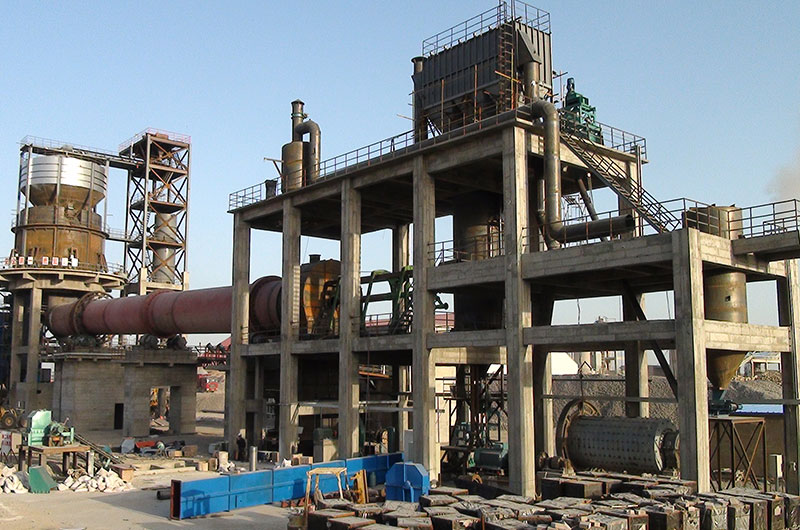The shell of large lime kiln is a heated rotary part, which is made of high-quality steel plate and is inclined to the horizontal. The whole kiln body is supported by supporting wheel device and has mechanical or hydraulic wheel blocking device to control the axial movement of kiln body. In addition to the main drive part, there are auxiliary transmission devices to ensure that the kiln body can still rotate slowly and prevent the kiln body from deformation when the main drive power supply is interrupted. In addition, reliable sealing devices of compound fish scales at the feed end (tail end) and discharge end (head) of the cylinder are installed. In order to prevent cold air from entering and flue gas and dust spilling out of the cylinder, the kiln type with larger diameter and shorter kiln length is generally adopted in the project, which not only reduces the range of upward and downward movement of kiln body, but also prolongs the circle forming period in the kiln and saves land occupation.
Pictures of large lime kiln



Working principle of large lime kiln
1. Firstly, the qualified limestone is stored in the silo, lifted by the elevator and transported to the silo at the top of the preheater. In the top bin of the preheater, the feeding amount is controlled by the upper and lower level meters, and then the limestone is evenly distributed to each chamber of the preheater through the feeding pipe.
2. Then, limestone is heated to 900 ℃ by 1150 ℃ kiln flue gas in the preheater, about 30% of which is decomposed and pushed into rotary kiln by hydraulic push rod. Limestone is decomposed into Cao and CO2 through sintering in rotary kiln equipment. The limestone generated after decomposition enters into cooler and is cooled by cold air in cooler to be discharged below 100 ℃; hot air at 600 ℃ after heat exchange enters into kiln and gas Mixed combustion. The waste gas is mixed into the cold air, enters the bag filter through the induced draft fan, and then enters the chimney through the exhaust fan.
3. Finally, the lime from the cooler is sent to the lime finished product warehouse by vibrating feeder, chain bucket conveyor, bucket elevator and belt conveyor.
Performance characteristics of large scale environmental protection lime kiln
1. Compared with the traditional equipment, large lime kiln is a well-made equipment, which has a long service life and considerable economic value for users.
2. The software control system of large-scale lime kiln equipment is very developed. Such equipment is more conducive to the application and operation of users, thus reducing the operation difficulty of users and improving the reliability of the equipment.
3. The main reason is that the noise suppression circuit plays a decisive role in the operation of large lime kiln, which makes the equipment more energy-saving and environmental protection.
4. Large lime kiln in terms of output and capacity, the equipment also has considerable advantages, its production capacity is very high, and the operation state is quite stable, so the output can meet the user standards.
Application of active lime
The main uses are as follows:
(1) Lime milk and mortar, hydrated lime powder or lime paste mixed with a large amount of painting. Lime mortar or cement lime mixed mortar can be prepared with lime paste or hydrated lime powder for masonry or plastering works.
(2) Lime stabilized soil is a mixture of hydrated lime powder or quicklime powder mixed with various crushed or original loose soil. The mixture obtained by mixing, compacting and curing is called lime stabilized soil. It includes lime soil, lime stabilized gravel soil, lime gravel soil, etc. Lime stabilized soil has certain strength and water resistance. It is widely used as the foundation of buildings, cushion of ground and pavement base of road.
(3) The main raw materials of silicate products are lime (hydrated lime powder or quicklime powder) and siliceous materials (sand, fly ash, pozzolanic ash, slag, etc.) and various products such as brick and block can be made after mixing, molding and curing. Because the internal cementitious material is mainly hydrated calcium silicate, it is called silicate products, commonly used are lime sand brick, fly ash brick, etc.






